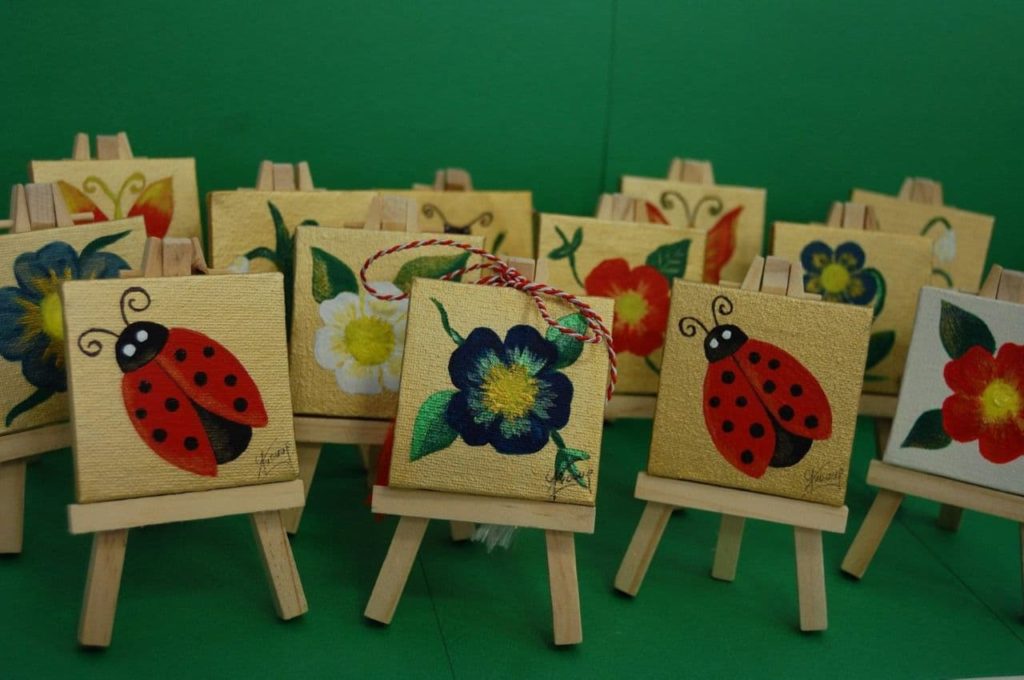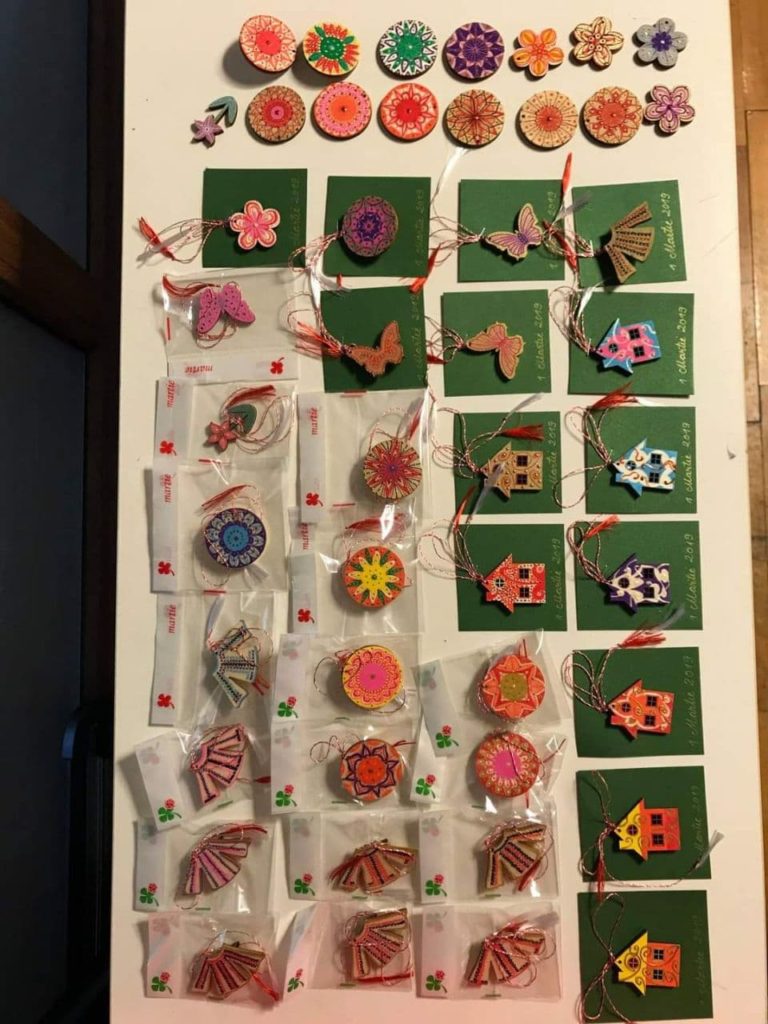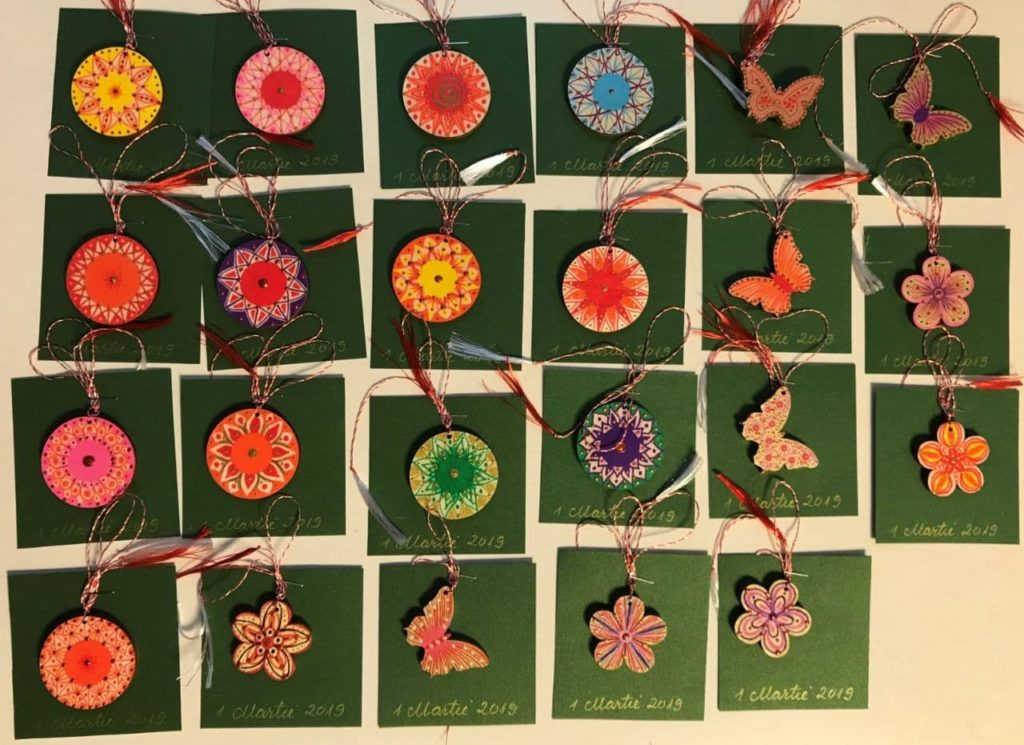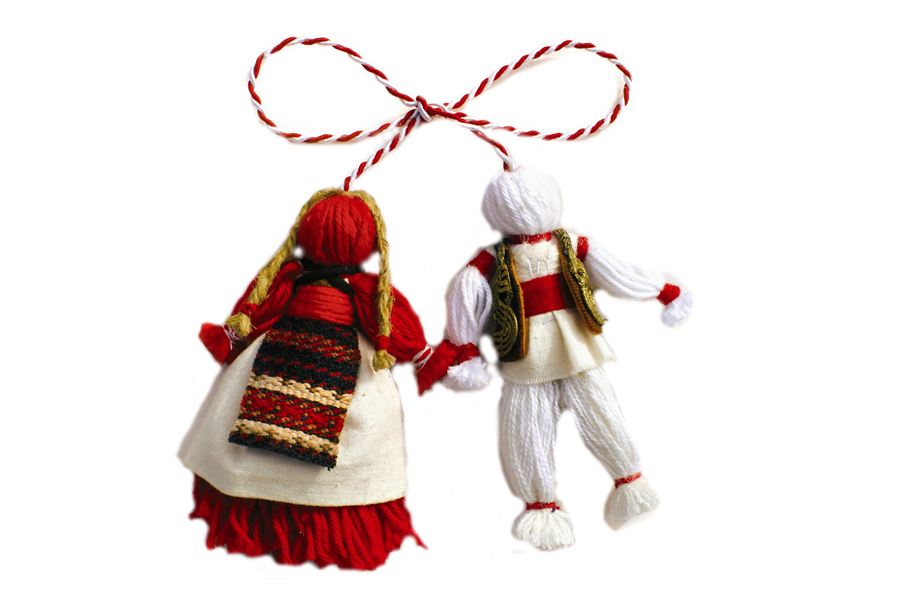The Mărțișor
8,000 Years of Celebrating Spring.
By Melline Galani.
Mărțișor is an old tradition celebrated all over Romania every year on March 1, and it represents a time of joy and revival of nature. In the Romanian language, the word mărțișor is derived from the word marț, the folkloric name for the month of March. The literal translation of Mărțișor would be “little March.”
According to archaeological research, Mărțișor traces its history back more than 8,000 years ago. Some ethnologists believe that the Mărțișor celebration has Roman origins, while others support the theory that it is an old Daco-Thracian tradition. In ancient Rome, New Year’s Eve was celebrated on March 1 in honor of the god Mars. He was the god of war and an agricultural guardian who ensured nature’s rebirth. Therefore, the red and white colors of Mărțișor may also reference the colors of war and peace. The Dacians also celebrated the New Year on the first day of March. Ample spring celebrations were consecrated during this event.
In olden times, Mărțișor talismans were made of small river pebbles, colored white and red, stringed on a thread, and worn around the neck. They were worn to bring good luck and good weather from March 1 until the first trees would bloom. When the first trees were blossoming, the Mărțișor talismans were hung on tree branches.

Mărțișor is also connected to the legend of Baba Dochia, one of the most popular figures in Romanian mythology. Baba Dochia is a figure associated with the arrival of spring. Legend has it that Baba Dochia’s son, Dragobete (Dragobete is also the name of the Romanian Valentine’s Day and is celebrated on February 24), married against Bada Dochia’s will. Upon finding out, she sent her new daughter-in-law to a nearby river to wash some black wool until it turned white. But no matter how hard the daughter-in-law tried, the wool would not change color and the poor girl started crying, fearful that she would never see her husband again. Upon seeing this, Jesus came down to Earth and offered her a red flower to wash the wool with. When the girl returned to Baba Dochia with the wool as white as fresh snow, Bada Dochia believed that spring had arrived, so she left with her flock for Ceahlau Peak in the Carpathian Mountains wearing nine wool coats. As she advanced higher on the mountain, the weather got warmer each day and she dropped her coats one by one. But as soon as she let go of her last coat, the weather turned bad and Baba Dochia froze on the mountain together with her flock.
Baba Dochia is the embodiment of time; it is the symbol of disputes between the old and the new, between the winter that must go away and the spring that must overcome it by the power of its warmth, the symbol of not only seasonal change but also intergenerational conflict. All the traditions about Baba Dochia reinforce the idea that, for Romanians, the year is structured based on the eternal opposites of light and dark, summer and winter, hot and cold, fertility and sterility, and life and death.

Another old Romanian legend says that once, in a fight with the winter witch who did not want to give up her place, the beautiful lady spring cut her finger and a few drops of her blood fell on the snow, which then melted. Soon in this place grew a snowdrop, and in such a way, spring overcame the winter. The snowdrop flower is now the symbol of joy, hope, and a new beginning.
Yet another legend tells that there was a time when the sun used to take the shape of a young man and descend to Earth to dance among the common folk. When a dragon found out about this and followed the sun to Earth, he captured the sun and confined him in a dungeon in his castle. Suddenly, the birds stopped singing and the children could no longer laugh, but no one dared confront the dragon. One day, a brave young man set out to find the dungeon and free the sun. Many people joined in and gave him strength and courage to challenge the mighty dragon. The journey lasted three seasons: summer, autumn, and winter.

At the end of the third season, the brave young man finally reached the castle of the dragon where the sun was imprisoned. The fight lasted several days until the dragon was defeated. Weakened by his wounds, the brave young man managed to set the sun free to the joy of those who believed in him. Nature was alive again and people got back their smiles, but the brave young man could not make it through spring. His warm blood was draining from his wounds in the snow. With the snow melting, white flowers, called snowdrops – harbingers of spring – sprouted from the thawing soil. When the last drop of the brave young man’s blood fell on the pure white snow, he died with pride knowing that his life had served a noble purpose. Since then, people have braided together two tassels: one white and one red.
Mărțișor tassels are a symbol of the rebirth of nature with the arrival of spring, which act as a talisman. The first one was a braided cord made of black and white thread, being replaced in time with a red thread, a color that protects from evil and expresses love in popular belief. White, in turn, signifies purity and energy. The two colors are open to interpretation: Red also signifies female vitality, and white – the wisdom of men. Thus, the strings of Mărțișor tassels express the inseparable interweaving of the two principles. Popular wisdom also shows that as the bearers of Mărțișor tassels are protected from sunburn during the summer; they will be as healthy and beautiful as spring flowers, in addition to being pleasant and loving, rich and lucky, and free from disease or the evil eye.

The oldest Mărțișor tassel in Romania apparently dates from 1879 and has the shape of a silver heart, and another, made in 1898, has the shape of a swallow in flight, both of which are in the possession of a hobbyist from Bucharest.
Nowadays, on March 1, Romanians buy silky red and white threads (șnur) tied into a bow to which a small trinket is attached, and they offer them to their female family members, friends, and colleagues to show friendship, respect, or admiration. From March 1 to 8, when Romania celebrates not only Women’s Day but also Mother’s Day (March 8), everything revolves around these tiny gifts. Men and children usually scour the markets and shops in order to find the most beautiful Mărțișor tassels for the ladies in their lives, while women look forward to wearing them pinned to their fanciest clothes. Their reputation as lucky charms might be long gone, but their design seems more eye-catching than ever.
One last tradition is that on the first day of March, women pick one of the first nine days of the month as their babă (hag). If the day they chose turns out to be warm and pleasant, then they will age beautifully and their spirit will be forever young. But if the day turns out to be cold, then they will turn bitter and turn into a hag. Actually, we do keep this tradition nowadays. My “hag” is always March 3 (it is the sum of my birth date 21 [2+1]), and most of the time I was lucky enough to get a fine, warm, sunny, spring day.
At present, Mărţişor is a tradition in Romania, the Republic of Moldova, and the neighboring territories inhabited by Romanians or Aromanians. Similar customs are also found in Bulgaria, Albania, and Macedonia.
For me, March and December are the best months of the year. In March, I have Mărţişor and Women’s Day to celebrate, in addition to the birthdays of my mother, cousin, and a few friends. Moreover, I was also born in March and have always felt this month (as well as December) to be a continuous celebration from start to end.

Resources
Ciobabu, D. (2017, March 1). Datini obiceiuri superstitii. CrestinOrtodox.ro. https://www.crestinortodox.ro/ datini-obiceiuri-superstitii/prin-martisor-daruiesti-particica- suflet-154340.html
Mateescu, L. (2019, March 1). Originea martisorului. Cunoaste Lumea. http://www.cunoastelumea.ro/originea-martisorului- obicei-specific-romanesc-afla-i-povestea/
Moceanu-RADOR, R. (2020, March 1). Sarbatoarea martisorului. https://www.radioromaniacultural.ro/documentar- sarbatoarea-martisorului-origine-si-traditii/
Rolandia. (n.d.). Martisor: The symbol of spring and the revival of nature. https://rolandia.eu/en/blog/discover- romania/martisor-the-symbol-of-spring-and-the-revival-of- nature
Traditions and Superstitions. (n.d.). March 1: Martisor traditions and customs, the meaning of martisor. https://www. traditii-superstitii.ro/1-martie-traditii-si-obiceiuri-de- martisor-semnificatia-martisorului/
The Author
Melline Galani is a Romanian enthusiast, born and raised in the capital city of Bucharest, who is currently living in Gwangju. She likes new challenges, learning interesting things, and is incurably optimistic. She loves March as she is a spring child. Instagram: @melligalanis




